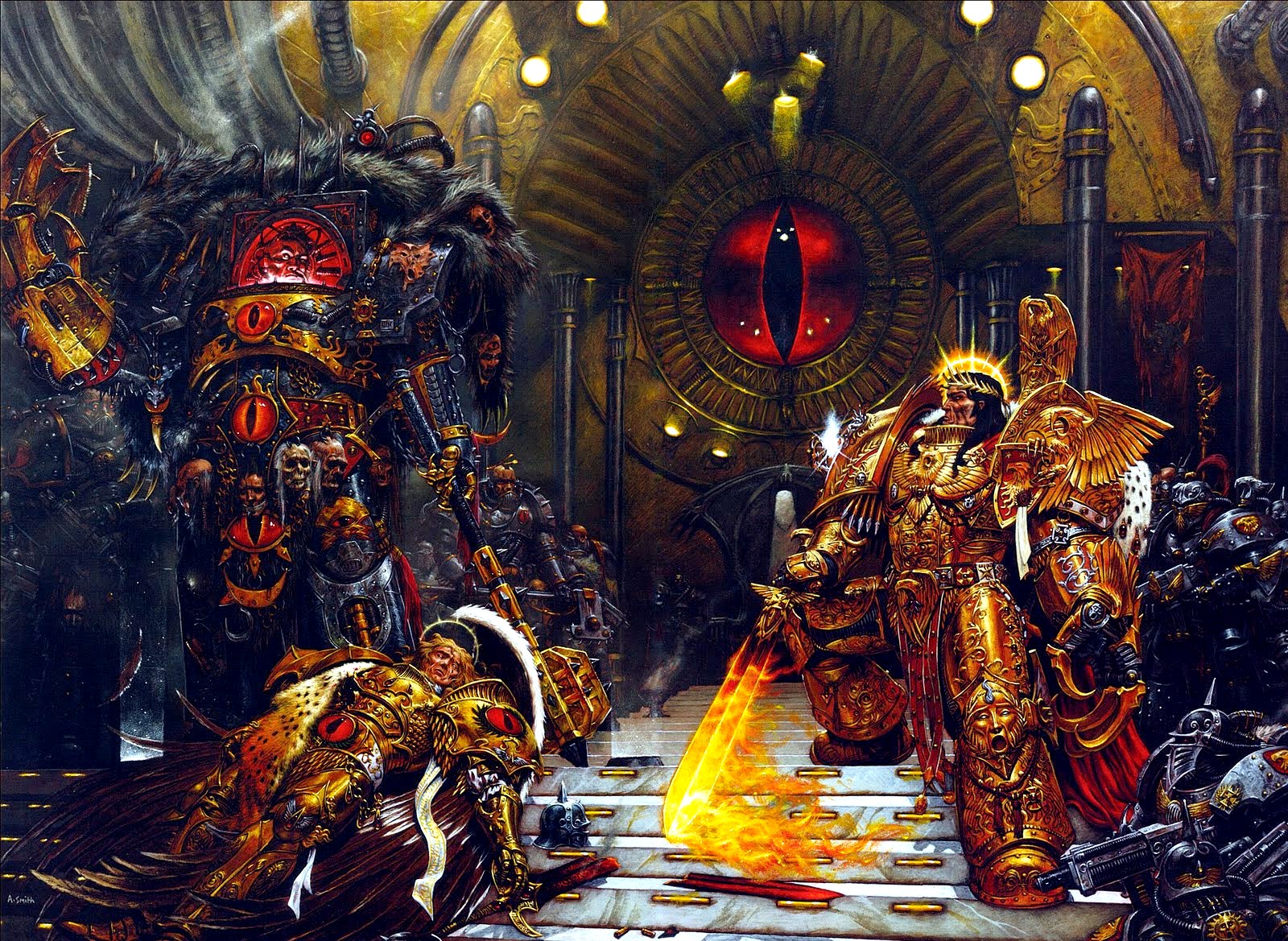Warhammer 40,000 has been a game that's had to balance itself both around a highly competitive scene and among casual players. It has a huge barrier to entry of hundreds of dollars in order to field the standard size army, which they have raised consistently in order to make profits. In the time I've been familiar with the game, it's raised from 1500 points in 4th Edition to 2000 in 6th Edition, stretching from a company-sized force to a small battalion and including things such as air support and bunker emplacements. While they've shied away from introducing massive superweapons to the game, they have produced rules and models for players that want to start that particular arms race. The amount of armor players can bring to bear is staggering.
 |
| A walker built from a plane by MBG |
Games Workshop has rarely included enough options inside the box to upgrade an entire unit to bring the number of special or heavy weapons the average player would want. Given the challenge of taking out walls of heavily armed vehicles, players have scrounged for special weapons that can damage these vehicles, but were forced to either buy extra kits from Games Workshop or trade with friends that configured their soldiers differently. Entrepreneurial players monetized this business, cutting the special weapons off the plastic sprues and selling them individually for an inflated price. It went so well that one seller, The Warstore, purchased the leading seller of these "bits" (or "bitz") simply to use a name (Battlewagon Bitz). It took years for Games Workshop to catch up and start releasing old castings of special weapons on sprues in their own bitz store. However, it's still at an inflated price, the weapons are clearly outdated and don't look quite right compared to the ones on the sprue, and is online-only. There was a third subset of players that would simply convert their own.
Conversions have always been welcomed in the hobby. Players would modify the models to suit their own needs, often making creative forces that looked significantly different than the original plastic. Games Workshop inadvertently created significant demand for conversions with two business strategies that happened at roughly the same time: they released models in "waves," and they began letting their content writers write books about a time that had not been explored except in snippets, the Horus Heresy.
The wave model was simple in its elegance. They held back models from codices as they were released so that they could continue a steady stream of revenue. This can primarily be seen in the new Tyranid codex, where they introduced a swathe of new units that had no models, including the lynchpin of the "new" Tyranid strategy, the Tervigon. After destroying the existing competitive builds of the Tyranid army by changing point costs and abilities of unit, the Tervigon became the most reliable way to add large, nasty offensive creatures to the table, and had the additional ability of creating more units. The Tervigon was a hot item, and Games Workshop had no model to appropriately represent it. Players were left looking to convert massive models.
 |
| Madness? This. Is. Terra! |
Taking advantage of the amount of models that were unrepresented, and knowing that players were looking for quick ways to convert these models, some players made their own conversions, and began casting them and selling them. One of these was the creator of Chapterhouse studios. His work wasn't particularly of the same quality of Games Workshop, but it sure beat cutting chunks out of your own fingertips doing large conversions. He made a quick and easy Tervigon kit that added to the existing Carnifex kit, among other unreleased kits like the Mycetic Spore. Additionally, he created his own version of Heresy models, with heads and bodies that were consistent with the artwork of the Horus Heresy books. He wasn't the only one doing this, but he was the most prominent, and when Games Workshop filed suit, he challenged them.
While the suit is largely unresolved, there are a few things that have come out of GW's scramble to stop the bleed caused by Chapterhouse (and Puppetzwar, and Maxmini, and...)
 |
| Probably the most tame of the tervigon conversions I've seen. |
GW appears to have done away with the "wave" system. After Chapterhouse's assertion that their Tervigon is original, GW appears to be afraid that if they don't release a model immediately, they may be hit with a copyright infringement suit. This is huge -- players will actually be able to play with new models, rather than having to choose between waiting and buying a kit from a third party. This might also discourage GW from using new models in new codices, given the cost of producing a kit. This is a mixed bag, because while players may be excited about new models and options, old armies remain viable, keeping the cost to upgrade low. They did, incidentally, finally release a Tervigon model.
GW has finally given a breath of life to Forgeworld, providing high-end Heresy-era conversions. While initially they stated that they were not meant to produce a Heresy line, current rumors point to a series of Heresy books in which Forgeworld brings the books to life. I, for one, am excited.
No comments:
Post a Comment